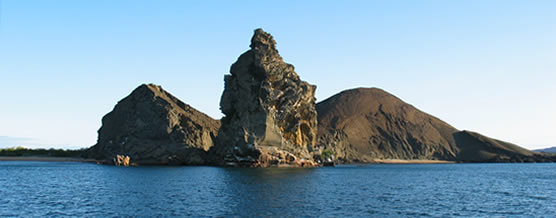
The Galapagos Islands
In 1979 UNESCO declared the The Galapagos Islands as a site of “Natural Heritage of Mankind.” In 1985, The Galapagos was declared a Biosphere Reserve, a Marine Geological Reserve and a Whale Sanctuary.
The Galapagos Archipelago is located 625 miles (1,000km) off the Ecuadorian Pacific Coast. It is made up of 13 large islands, 6 small islands and 40 islets. It emerged from the ocean floor about five million years ago as the result of submarine volcanic eruptions.
The archipelago extends some 3,092 sq. miles (8,010 Km2). Various marine currents come together here creating the perfect land and marine climate for the development of unique botanical and zoological life.
The island’s land and marine environment offers varied landscapes that have captivated the hearts and minds of many generations of tourists and scientists alike.
Giant tortoises, land and marine iguanas and lava lizards represent some of the most spectacular reptiles ever known. Birds are represented by 13 different species of finches, flightless cormorants, frigates, penguins, hawks, mockingbirds, albatrosses, flamingos and blue-footed boobies to name but a few.
The Charles Darwin Station is the official institution in charge of scientific research, conservation and protection of the islands. The Galapagos National Park Service is a government institution in charge of regulating tourism and migration to the islands.